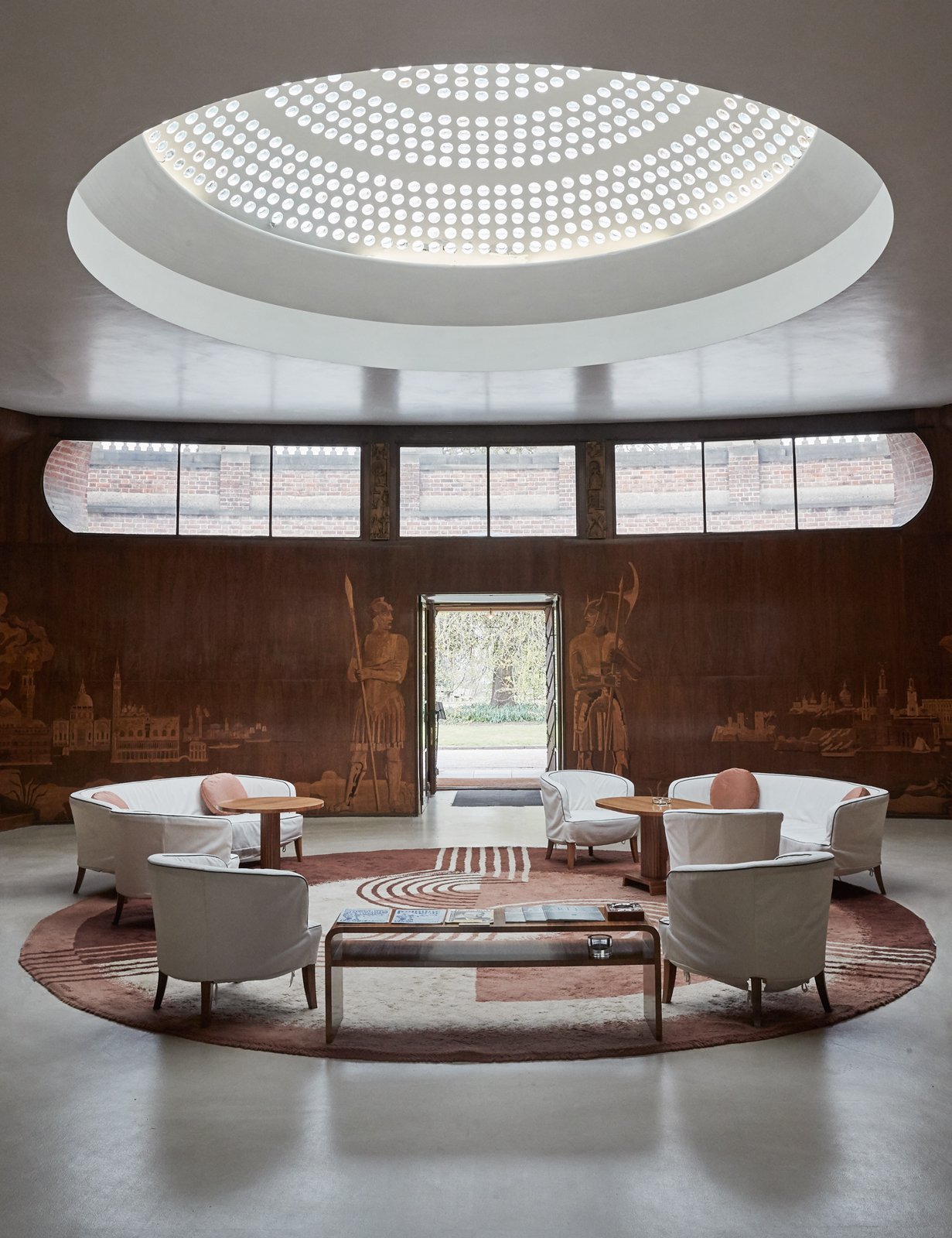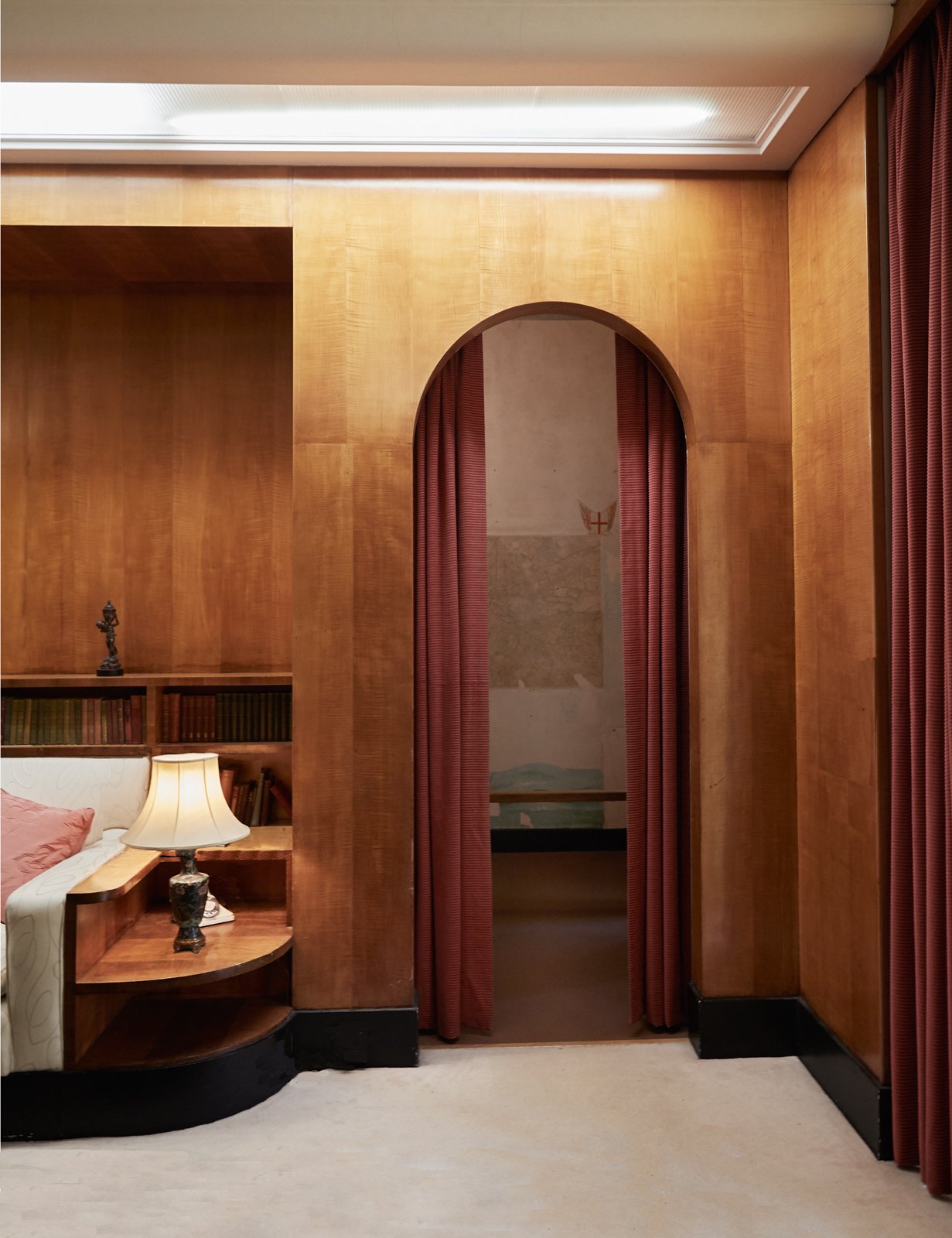London Day Trips
Category: Art & Architecture
London is an ideal travel destination as it seems to have everything one could want; the world’s best museums and art galleries, great restaurants, large parks for walking, and endless opportunities when it comes to fashion. But sometimes you just want to escape, see something new and be in a place that you’ve never seen before. Around London, and within easy reach, are a number of destinations worth the trip.
Eltham Palace, Court Yard, London
Once a mediaeval royal palace, Eltham Palace is now the finest Art Déco mansion open for visits from the public. Through the centuries, it has played host to kings and queens and international statesmen – in 1400, Henry IV welcomed Byzantine emperor Manuel II Palaiologos to Eltham to celebrate Christmas.
It’s one of the few mediaeval royal palaces in England to survive with substantial remains intact. Initially a moated Tudor house, it was given to the future Edvard IV by Bishop Bek. Under his ownership, the house was reconstructed, and the 1470s great hall was added. Beginning in the 16th century, the manor began declining, and for 200 years following the Civil Wars, it was used as a farm.
In the 1930s it was acquired by textile magnates Stephen and Virginia (Ginie) Courtauld, who wanted a semi-rural property within easy reach of central London. They contacted the architects Seely and Piaget, and the new house was built in a way that linked it to the great hall. The Courtaulds hired some of the foremost designers and craftsmen of their time to create a range of lavish interiors and outstanding gardens. The house was decorated with the couple’s collection of art and furniture.
Visitors will first see the curved entrance colonnade, flanked by two tall, copper-clad pavilions. The green-painted steel casement windows, by Henry Hope and Son, are typical of the 1930s. The infilled arches of the colonnade are inspired by Sir Christopher Wren’s Hampton Court Palace and the library at Trinity College.
Typical features include wall surface lined with a range of native and exotic woods, the use of pale paint colours – a contrast to the strong colours favoured by the Edwardians – and ceilings designed as an integral part of the room.
The most dramatic interior is the triangular entrance hall, created by Swedish designer Rolf Engströmer: Its walls are lined with black bean veneer and decorated with marquetry, probably the largest in a private interior, manufactured by Swedish department store NK.
Stephen Courtauld wanted it to depict his favourite places. On one side of the wall; a Roman soldier in colossal format, and buildings from Florence and Venice. On the other side, the entrance is guarded by a romanticised Viking and next to it you can see Stockholm, with the City Hall in the centre. In addition, Gripsholm Castle and the Visby city-wall are depicted, showcasing Courtauld’s interest in Swedish history.
Benches, sofas, armchairs, differently shaped tables, and low cabinets – everything is designed by Engströmer, which makes it one of the most significant collections of his designs today.
The dining room was designed by Italian Peter Malacrida, defined by contrasting tones and textures for effect, with bird’s-eye maple veneer walls and an aluminium-leaf ceiling.
The distinctive black and silver doors depict animals and birds drawn from life at London Zoo.
Virginia Courtauld’s vaulted bathroom has walls lined with onyx, with gold mosaic tiles in the bath niche. Many of the bedrooms on the first floor are built in the “Cunard style”, made fashionable by the cruise liners of the time.
In 1944, the Courtaulds left Eltham, and the site was occupied by Army educational units until 1992. English Heritage took over the site in 1995, restoring the 1930s house and gardens.
The Queen’s House, Greenwich
The ”queen” in the name of Queen’s House refers to Anne of Denmark, wife of James I.
The house was designed for her by Inigo Jones, Surveyor of the King’s Works. After her death in 1619, it remained unfinished and thatched over at ground-floor level until 1629. Jones completed it around 1635 for another queen, queen Henrietta Maria (wife of Charles I). East and west bridges were added later, in 1662.
Jones used classical, Ionic orders, together with geometrically measured spaces to create a structure of harmonious proportions. This is something he later would become famous for, as he repeated this style when designing the Banqueting Hall at Whitehall and later at Wilton House. Beginning in the 18th century, his ideas were taken up by that time’s designers and architects, resulting in the widely spread Georgian style.
Jones’ aesthetics laid the foundation for English Palladianism, a style fashionable in Britain between 1715 and 1760. The name comes from Andrea Palladio, one of Italy’s most imitated architects. A few years before he began building the Queen’s House, Inigo Jones had visited Italy to study art, architecture, and philosophy. When he returned to England, he brought with him Palladio’s aesthetic principles, based on harmony, detail and proportion. The symmetrical shape of the Queen’s House was very different from the red-brick palaces of the time, and through this contrast, the new building appeared very fashionable.
The centrepiece of the house is the Great Hall, shaped as a perfect cube in the heart of the building, with a first-floor gallery overlooking a black-and-white marble floor. Another famous architectural detail is the Tulip Stairs, a geometric spiral stairway that ascends through the building, beneath a glass lantern. This was the first centrally unsupported spiral stair in Britain; each tread is cantilevered from the wall and supported by the stair below.
In recent years, the Queen’s House has exhibited some of Royal Museums Greenwich’s finest artworks, including paintings by Gainsborough, Reynolds, Hodges, Hogarth, and the van de Veldes.
It’s also home to the famous Armada Portrait of Elizabeth I, which marks the most famous military conflict of her reign – the failed invasion of England by the Spanish Armada in summer 1588. This painting is on permanent public display on the site of the original Greenwich Palace, which was also the birthplace of Elizabeth I.
The Painted Hall, Greenwich
After having visited the Queen’s House, it’s not even a five-minute walk to the Old Naval College. A meal isn’t only about what you eat but also about your surroundings. The architects behind the Old Royal Naval College’s Painted Hall understood this.
Designed in the earl 18th century by Sir James Thornhill, it features 40,000 feet of Baroque walls and ceilings, every surface covered in images depicting 200 figures including royalties and mythological creatures. Today, it serves mainly as a tourist attraction, but is still used as a dining hall for special occasions.
Thames Barrier Park
The Thames Barrier Park is a 7-hectare park in Silvertown in east London, named after its location on the north side of the river Thames, next to the Thames Barrier. It is intended to aid the regeneration of the area by creating an attractive public space alongside residential and commercial developments.
It was opened in 1995 and is considered the first largely postmodern park in London.
The park was designed by French landscape architects Allain Provost and Alain Cousseran, in tandem with British architects Patel Taylor. It was created on a site that once housed petrochemical and acid works on the Thames riverbank, as this was the location of the PRChemicals factory. The contaminated soil is still there but covered with a six-foot layer of crushed concrete, preventing it from coming into the new soil, laid on top.
Since it was first opened, it has won several design awards, both in the UK and the US.
The park features 32 fountains in a stone courtyard. It also has family facilities, including children’s play and picnic areas.
One of the most eye-catching features is the “Green Dock”, a 130-foot-long sunken garden, running diagonally through the part. This is intended as a reminder of the park’s dockland heritage, while also providing a wind protected microclimate for a variety of plants and wildlife.
Two bridges cross the Green Dock and reveal vistas across the colourful, scented garden.
The park also boasts extensive lawns that are crossed by gravel pathways and bordered by yew and many green hedges.
The park is right next to the Thames Barrier, which is a retractable barrier system built to protect the floodplain of most of Greater London from exceptionally high tides and storm surges moving up from the North Sea. It has been operational since 1982.
When needed, it is closed (raised) during high tide; at low tide, it can be opened to restore the river’s flow towards the sea. Flooding in London has been a problem since Roman times. The concept of the rising sector gates was devised by Charles Draper.
Work began at the barrier site in 1974, and today, the barrier divides the river into four 61-metre and two approximately 60-metre navigable spans. As of April 2023, there have been 208 flood defence closures. The barrier has survived 15 boat collisions without serious damage.


























